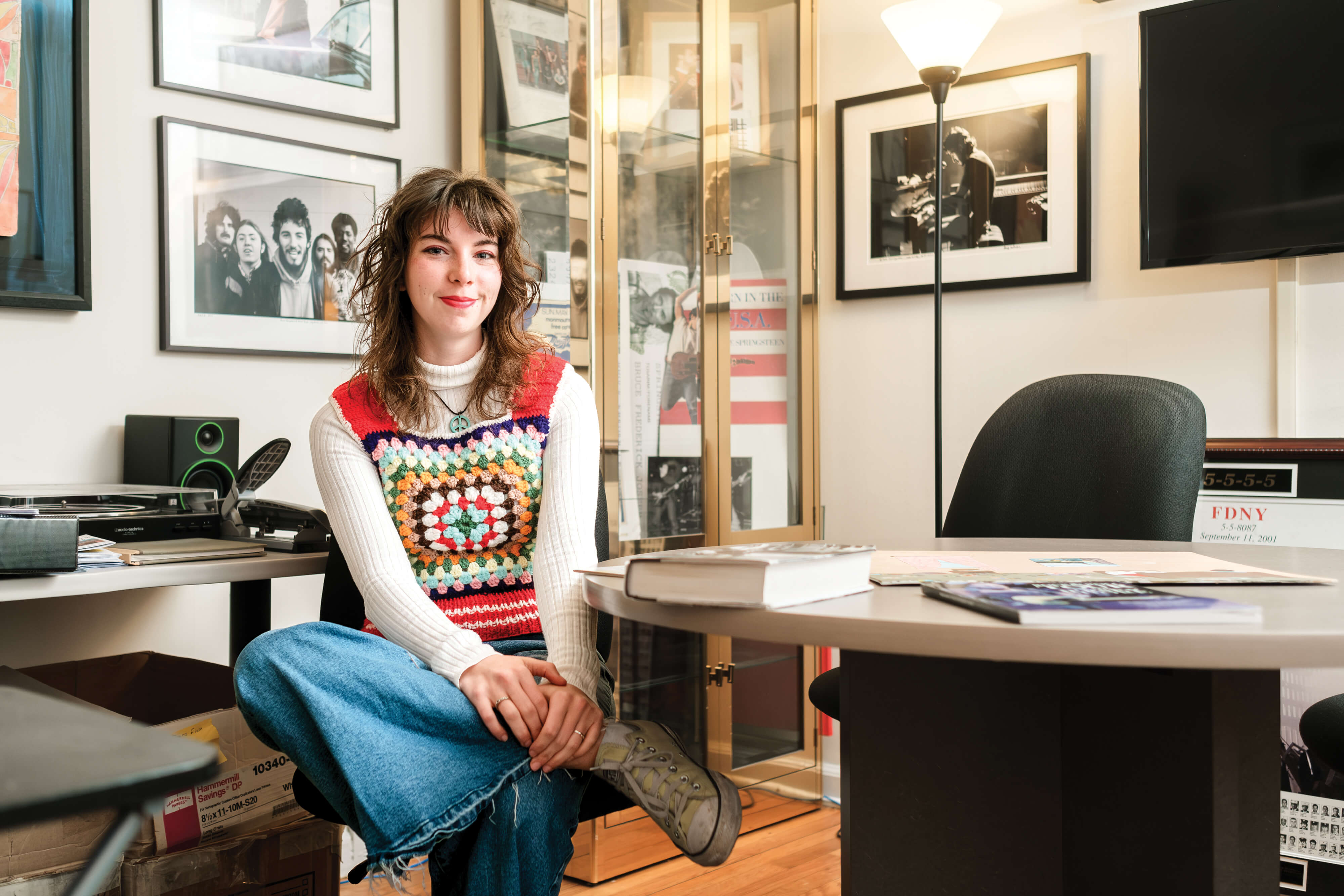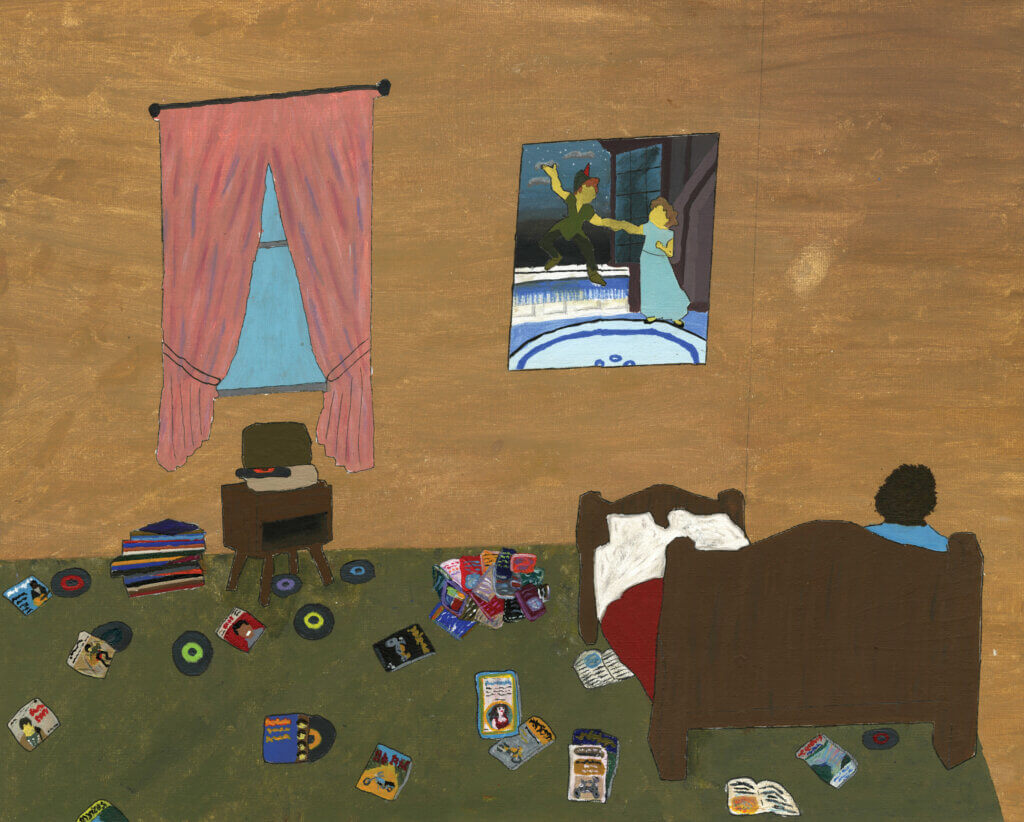
Song Sleuth
Carlee Migliorisi lets us in on the little-known history behind one of rock’s legendary anthems.
Like the mysterious figures who inspired the Rolling Stones’ “Angie” and Carley Simon’s “You’re So Vain,” the identity of Wendy, the woman Bruce Springsteen implores to “let me in” in his song “Born to Run,” has long been the subject of speculation. While some fans think it’s a reference to Wendy Cook, a childhood acquaintance of Springsteen, others say the singer chose the name at random. A few have even theorized a link to Wendy Darling, the character in Peter Pan.
Senior English education major Carlee Migliorisi once counted herself among the random selection camp. “I figured he just picked the name out of a hat and threw it in there,” says the Springsteen uberfan. “I didn’t really think there was much significance to it.”
But after spending last summer researching the birth of the song, she’s convinced there is a connection to the beloved children’s story. And she shared what she discovered about the song’s creation in an unexpected way.
The project started last spring after Migliorisi, who works as a student archivist in the Bruce Springsteen Archives and Center for American Music, stumbled upon an issue of the long-out of-print magazine Crawdaddy. Published in 1975, just after the “Born to Run” album had been released, the magazine featured a cover story on Springsteen. Written by editor Peter Knobler, the article includes a brief description of the Long Branch, New Jersey, cottage in which Springsteen lived while working on the album. The bedroom there was a mess, Knobler wrote, with motorcycle magazines and records strewn about. But there was a key detail—just a few words buried within eight pages of text—that caught Migliorisi’s eye.
“Above Springsteen’s bed … was a tacked poster of Peter Pan leading Wendy out the window,” she explains. It’s common knowledge among fans that Springsteen wrote “Born to Run” while sitting on the edge of his bed, says Migliorisi, and she thinks the singer likely found lyrical inspiration in his surroundings.
When you look at the lyrics, ‘Wendy, let me in. I want to be your friend. I want to guard your dreams and visions,’ to some extent, that is what Peter Pan is trying to do in the beloved classic story. … He doesn’t want Wendy to grow up.
“If you’re just sitting there with a notebook and don’t have any ideas on what to write about, you tend to look around,” says Migliorisi. Given the additional context she found in Knobler’s article, “All of the arrows are pointing in the direction of Springsteen sitting at the edge of his bed, looking up above his headboard … and there, right above him, are Wendy and Peter Pan.”
Disappointed there was no photo of the room—“it’s such a big piece of the story behind the song”—Migliorisi decided to re-create the iconic space in a painting. Wanting to make it “as historically accurate as possible,” she started combing through everything she could find in the Archives that would give her an idea of the room’s contents.
“At that time, Springsteen was giving himself a crash course in ’50s rock ’n’ roll … and he had a 45 player right next to his bed so that he could just roll over and put a song on without having to get up,” says Migliorisi. So, she researched which albums Springsteen would have been listening to—Roy Orbison, the Everly Brothers, and Elvis, among others—and incorporated them into her painting. Then she searched online for motorcycle magazines from the time period that Springsteen rented the house so that she could accurately depict those. She also studied typical 1970s bedroom decor; hence the “awful green carpet” in the painting. She even threw in an Easter egg: the cover of the Rolling Stone magazine that Springsteen was featured in at that time.
“I thought, ‘He was in the issue, of course he probably had a copy laying around in his room,’” says Migliorisi. “I pulled in everything that could have possibly been in that room to make the painting feel as authentic as possible.”
Migliorisi says she’s received “pretty good reviews from people who lived through the ’70s” about the painting’s authenticity, but one person’s feedback was particularly meaningful. When Knobler visited campus last fall for a 50th anniversary symposium on “The Wild, the Innocent & the E Street Shuffle,” Migliorisi showed him her creation.

“He was honored that I took such inspiration from his article,” she says. “He also seemed very touched when I told him how important I view Crawdaddy in the story of Bruce Springsteen. Being that the magazine did not last for more than 13 years, it is often forgotten or generally unknown to most people.”
Migliorisi, who’s planning to pursue a Master’s in English at Monmouth after graduating this May, says she hasn’t ruled out compiling her research into a formal academic paper.
“I think Wendy is more of a symbol,” says Migliorisi. “When you look at the lyrics, ‘Wendy, let me in. I want to be your friend. I want to guard your dreams and visions,’ to some extent, that is what Peter Pan is trying to do in the beloved classic story. … He doesn’t want Wendy to grow up.” It’s a theme that runs not just through the song “Born to Run” but through the entire album, says Migliorisi. The coming-of-age narrative Springsteen crafted on “Born to Run” is one he would build on in later works that feature characters who are forced to grow up and confront the challenges of adulthood, she says.
Does that sound like the seeds of a yet-to- be-written master’s thesis? Perhaps. But till then, “It’s just a fun tidbit about one of my favorite artists and the inspiration for one of rock ’n’ roll’s most famous songs,” says Migliorisi.